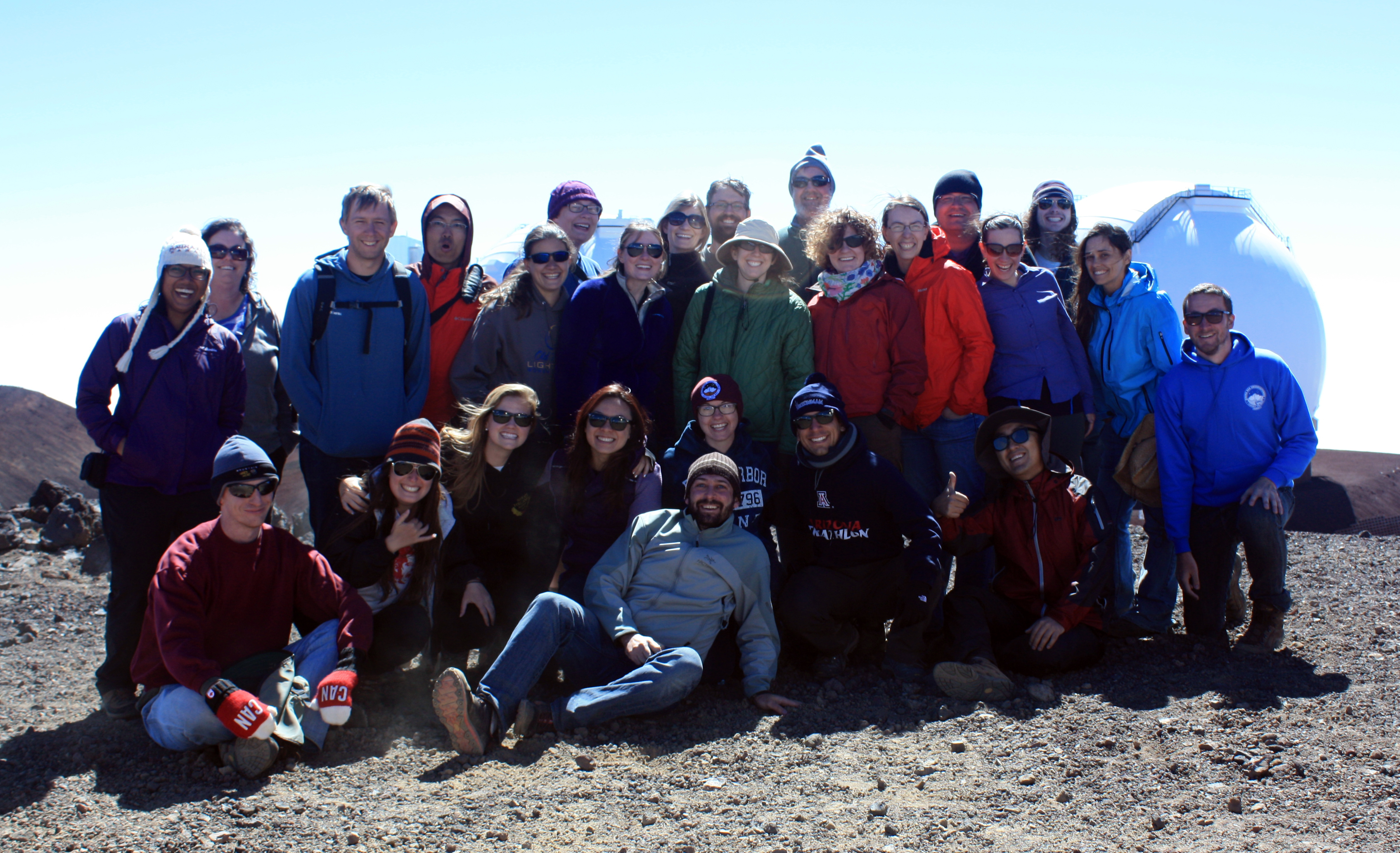LPL Fieldtrip Spring 2014: Hawaii
Hawai`i
by Shane Byrne and Christopher Hamilton
Thanks to the generosity of donors, we were able to roam farther afield than usual this semester—much farther. The southwestern United States is gifted with exceptionally diverse geology, but there are some processes, such as active volcanism, that cannot be seen in our local area.
In May, we packed our bags for the Big Island of Hawai`i to take a look at some of the freshest and most diverse lava flows in the world. Usually we spend just 3–5 days on these trips, but this time we spent a full two weeks on the trip and we needed every day! This trip was especially well timed as Christopher Hamilton, a planetary volcanologist with ongoing fieldwork in Hawai`i, had just joined the LPL faculty and so was able to guide us through these sites.
Hawai`i is made up of several large shield volcanoes. We spent most of the trip on the Kīlauea Volcano on the south side of the island and its two rift zones. Much of the recent volcanic activity has been concentrated there in an area that is largely covered by Volcanoes National Park. We identified two field sites that we would spend three days each at: the Ka`u Desert and Mauna Ulu. Before we left, we spent a significant amount of time working in small groups on remote sensing datasets of these areas so that by the time we got there we had projects in mind and ideas to test. We were also able to piggy-back on Christopher’s other research projects and have access to equipment such as infrared radiometers, differential-GPS, and a terrestrial scanning LIDAR.
The Ka`u Desert is not really a desert in the southwestern sense of the word, as it rains there frequently. However, it is kept relatively free of vegetation by the corrosive fumes that are emitted by the Halema`uma`u Crater at the summit of Kīlauea. The plume of these fumes frequently sweeps back and forth across this area, so this is the only fieldtrip where we all carried respirators with us—luckily we did not need to use them. Each day’s work required hiking into the desert for about an hour from Hilina Pali Road. Many of our groups worked around the location of the fresh 1974 flow although one group drove further down this road to investigate fault scarps near Hilina Pali itself.
Manua Ulu is a shield volcano that had a major eruption in the 1960s. We visited the caldera itself on the first day and saw the location of perched lava ponds on its flanks. We walked the length of a major flow southward to where it intersected Chain of Craters road and passed several breached lava dams along the way. Most of the subsequent fieldwork that people did at this site was close to where this flow crossed the road. Further along Chain of Craters Road, a flow from another eruption has blocked the road entirely before entering the sea and is now a tourist attraction.
About half the trip was devoted to investigating these two sites; on the other days we had shorter visits to additional places of interest. Lava–seawater interactions lead to spectacular explosions and we saw the results of that in two locations. Fine-grained debris from these explosions piles up in littoral cones that later can be eroded away by the waves. One of these cones is so rich in the mineral olivine that the sand on the adjoining beach is green. Another beach we visited had the more common black sand, which is basically the volcanic rock basalt that has been mechanically pounded into small pieces. Although it is not widespread on the Earth, this black sand is quite similar to the sand we see commonly on Mars. The staff at the Hawai`i Volcano Observatory also gave us a great tour and talked to us about Kīlauea and Kīlauea Iki. We had a chance to walk through the Kīlauea Iki caldera, which hosted a lava lake during an eruption in 1959. There’s still a hot heat under the surface—fissures there continue to vent steam 55 years after the eruption.
For some non-geologic planetary science, we visited the summit of Mauna Kea and thanks to the generosity of the IRTF staff had a tour of their telescope. After seeing a beautiful sunset from the summit we had a great time at a star party held in the visitors’ center at lower elevation.
Most volcanism on Earth is related to tectonic plate boundaries and is not the best analog for volcanism on planets that lack plate tectonics. Hawaiian volcanism, on the other hand, occurs in the center of the pacific plate and forms a great planetary analog. Lots of people vacation in Hawai`i, but few have the chance to dig into the geology like this. It was an extraordinary trip to a truly unique environment that we will all remember.


